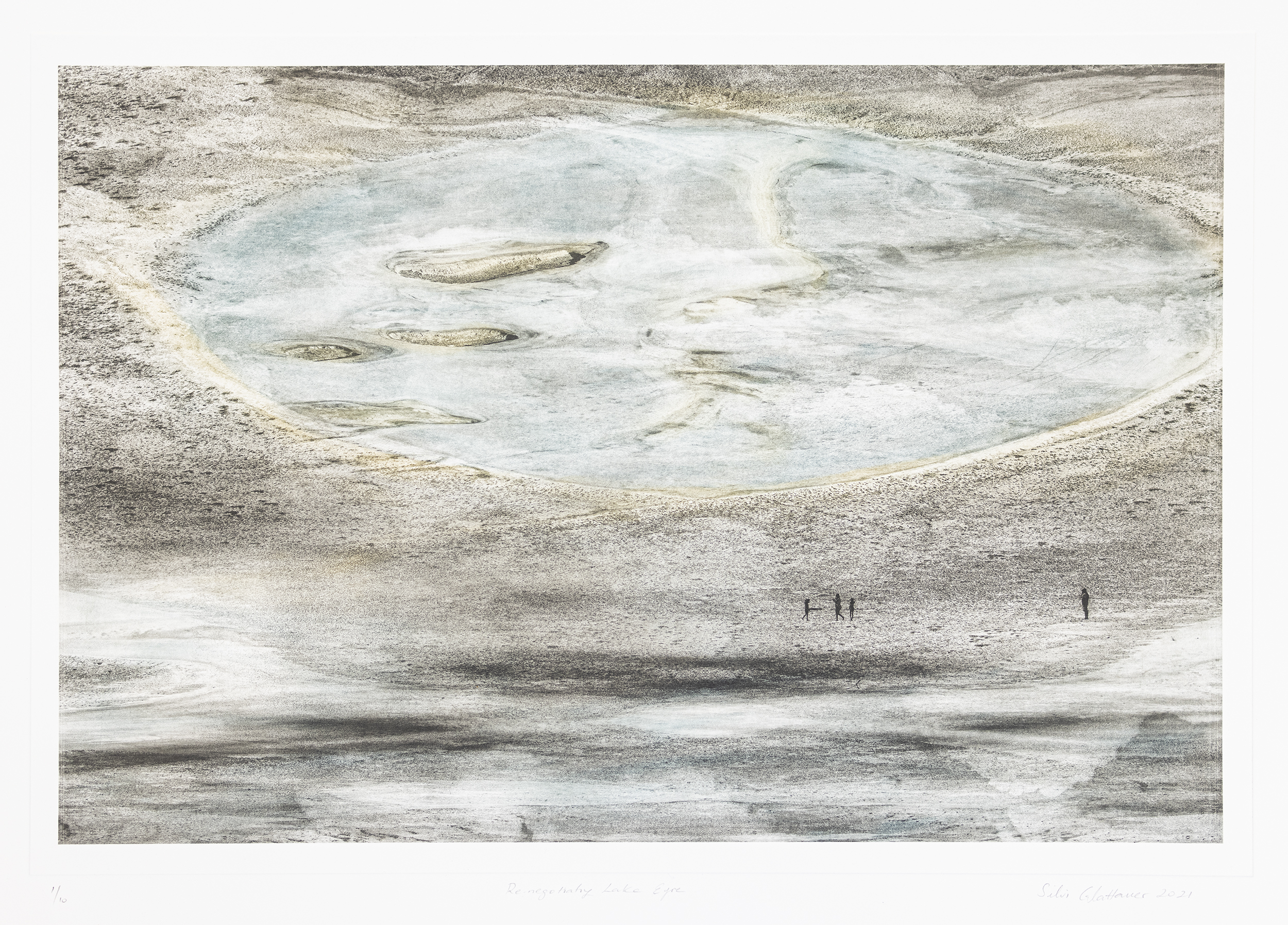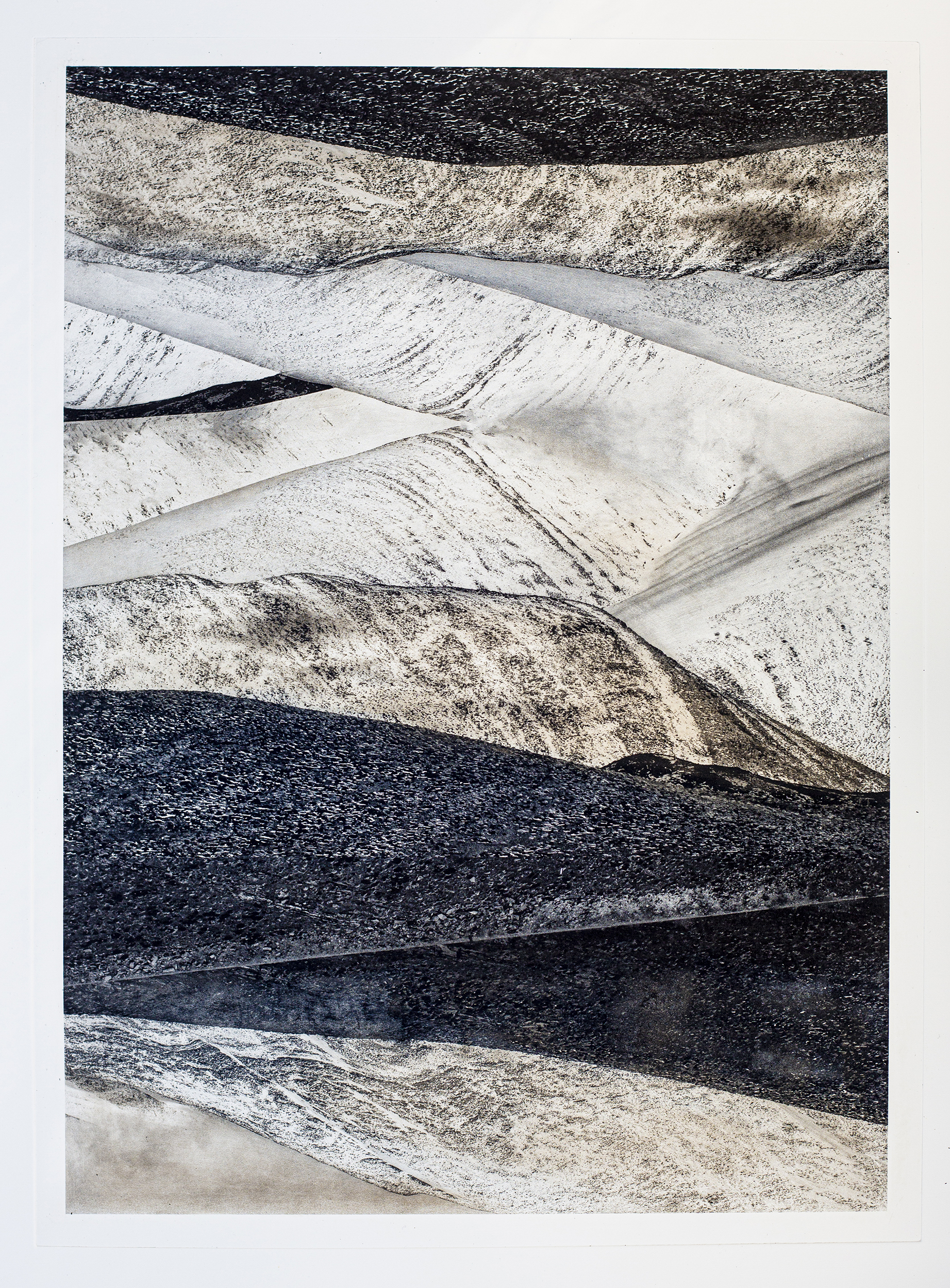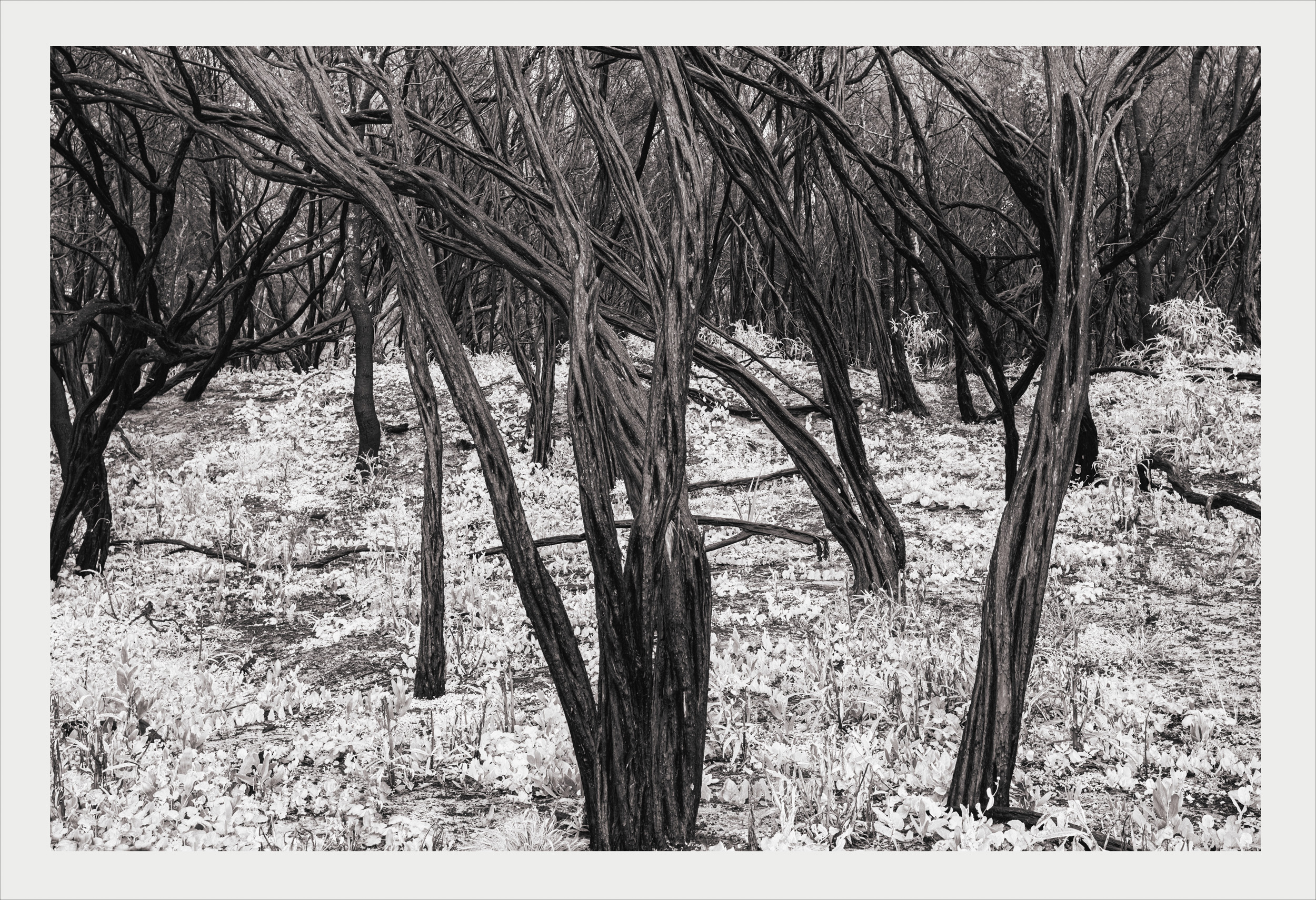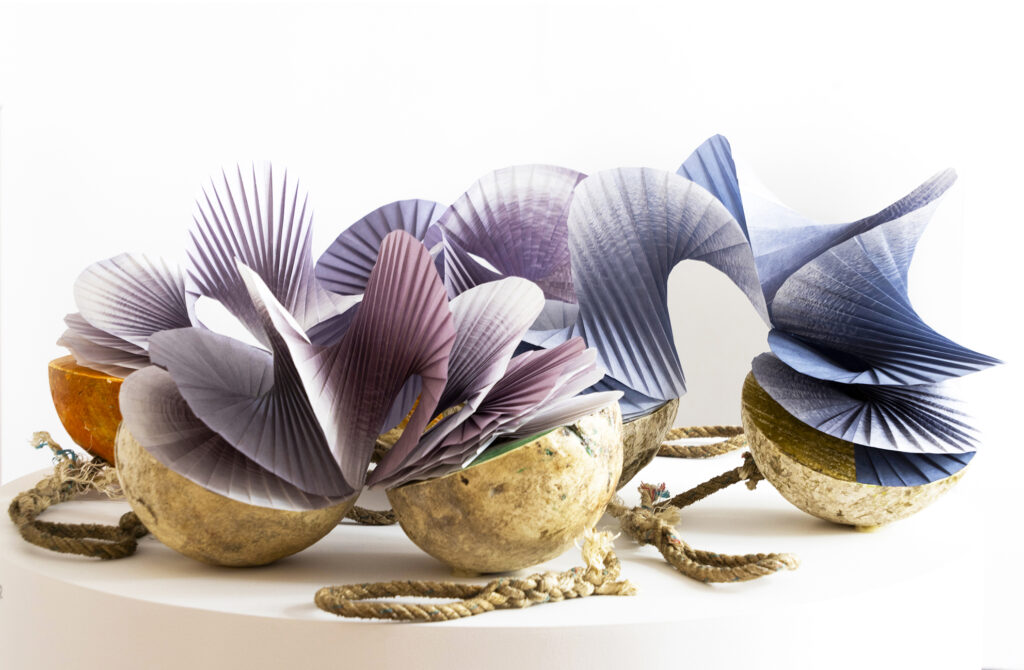

From top:
Silvi Glattauer, Carbon Black IV, 2021
photogravure, à la poupée colour, 56 x 76 cm
edition of 10
Silvi Glattauer, Renegotiating Lake Eyre, 2021
photogravure, à la poupée colour, 56 x 76 cm
edition of 10
Silvi Glattauer, Renegotiating the Atlas, 2019
photogravure, à la poupée colour, 76 x 56 cm
edition of 3
Here is what comes next. Here is the aftermath. Layer upon layer of parched sand and shattered rock; lake beds evaporated into fields of salt; charred and crumbling forests. From the mountains and high plains of Argentina, to the dunes of the Sahara and the lakes of central Australia, to the fire-swept shores of Gippsland: mesmerising landscapes of beauty and ravage.
This is what we see in these works by Silvi Glattauer, exhibited in ‘Renegotiating the Landscape’. But this is not all we can see.
Silvi Glattauer is a printmaker and photographer who has developed a unique practice, and reputation, through her experimentation in the techniques of photogravure. Glattauer’s longstanding fascination with the material process of printing, of transferring images onto paper, has been fed by many sources: from growing up sitting in her father’s darkroom, to studying and then teaching photography, and through her two decades as a founding member and studio manager at Baldessin Press & Studio, in the hills northeast of Naarm/Melbourne.
For Glattauer, photogravure has provided the ideal medium to bring together these influences; but the technique’s traditional reliance on acids and asphalt, copper and zinc – hazardous to the practitioner, and acquired through industrial processes – proved troublesome. With extensive and ongoing research, Glattauer has been able to evolve a cleaner practice of ‘direct to plate’ photopolymer photogravure that retains, and indeed expands, the potential to explore tonalities and textures that has always been essential in the disciplines of intaglio printmaking.
This cleaner, healthier practice is not just a generalised act of ecological citizenship. Throughout her career, Glattauer’s work has drawn upon, documented and interrogated landscapes and ecologies across the globe. Born in Argentina and living in Australia, a key theme in her practice is her lived experience as a migrant across settler states in two continents – both of which have been marked and marred by colonial extraction in despite of agelong indigenous knowledges.
Upside down country: this is a phrase from First Nations owners of country that has resonated for Glattauer.[i] The terrains she has traversed and invoked in ‘Renegotiating the Landscape’ – the harsh altiplano of the Argentinian Andes, the barren dunes of Morocco, and Lake Eyre and Lake Frome in South Australia – are typically cast from outside as ‘untouched’. These are not open-cut mines or clear-cut rainforests. But no matter how remote they may seem, they still bear the trace, direct or indirect, of the global economy. Minerals are wrenched from the hills of Piedra Pomez, and the factories they feed drain Erg Chebbi’s wells and fuel vast fires across the Snowy Mountains.
Here are the connections that can be traced in Silvi Glattauer’s work, from (South) America to (North) Africa to (Central) Australia: landscapes that have been turned ‘upside down’ and linked together in long chains of mining and manufacturing, production and consumption, emission and absorption. They are landscapes that share a harsh beauty: clean and spare, rock and sand and stark stripped branches. Glattauer’s images all show country that has been purged and shattered, fractured and fragmented – and, dare it be said, reassembled.
We encounter these sliced and spliced and laminated landscapes in so many of Silvi Glattauer’s works. Dune is layered upon dune in ‘Renegotiating the Atlas’; sand leads to rock leads into shining pewter stretches of evanescing water in ‘Renegotiating Lake Frome 2’; choruses of singed hills stretch out through ‘Carbon Black 6’. Horizons vanish – even the clouds of ‘Cordon del Antigal’ and ‘Dunas Blancas’ are simply yet more strata, layers rising but not floating above the rocks. In these images, we are drawn into far distances of band upon band of pure geology.
But then we’re thrust back down again to the ground beneath our feet: and we’re confronted with the materiality of carbon, in the lush burnt trunks of the ‘Carbon Black’ suite. This is the end result, the outcome of all our taps and swipes and votes. We’ve been instructed not to be ‘afraid of coal’, and here is this so very beautiful charring that’s ultimately emerged from our mines and power plants.
It’s all carbon: from the pillaged Andean ranges, to the dehydrated deserts of the Sahel and the Tanami, to those oh-so-mournful phalanxes striding across the burnt-out coastal hills of Victoria and New South Wales.
It’s all carbon: those luscious black tones and shades of ink on paper. The prints on the wall, and the lights in the hall.
Silvi Glattauer reminds us that all of these spaces – visual, personal, and geographical – are linked. In the richly material works of ‘Renegotiating the Landscape’, she renders explicit the circumfusa, the ‘objects which surround’ environment and climate: through both her intense and detailed attention to the local, and her ambitious framing of the enveloping context.[ii]
And this is also the hope that lies buried at the bottom of Pandora’s box, all but smothered beneath the sins of industry and commerce. This is Silvi Glattauer’s challenge: that we must recognise these connections, from continent to continent, from mine to aquifer to blazing firestorm – and, yes, from the charred carbon of the forests to the inky carbon of photogravure – and in full awareness of these links, we must begin to build a new relationship with our lands… that we must renegotiate our landscapes.
[i] Dja Dja Wurrung Aboriginal Clans Aboriginal Corporation, Dhelkunya Dja: Dja Dja Wurrung Country Plan 2014-2034, 2017
[ii] Christoph Bonneuil & Jean-Baptiste Fressoz, The Shock of the Anthropocene, 2015 (Verso, trans. David Fernbach)
—
Silvi Glattauer – Renegotiating the Landscape is at Megalo Print Studio (ACT), 26 April – 7 May.
—
Join the PCA and become a member. You’ll get the fine-art quarterly print magazine Imprint, free promotion of your exhibitions, discounts on art materials and a range of other exclusive benefits.





